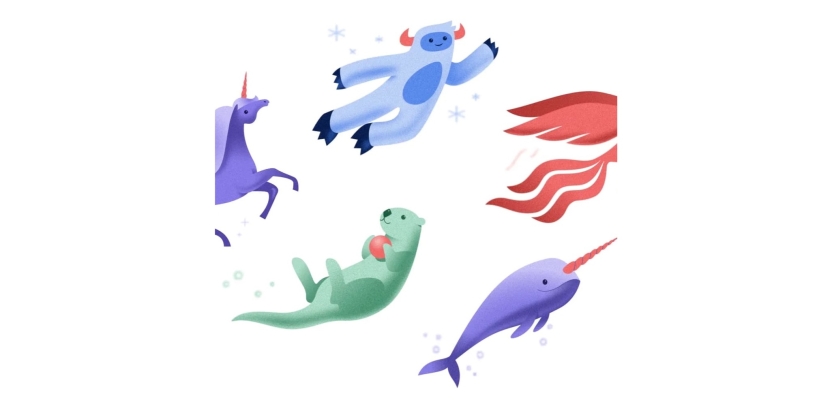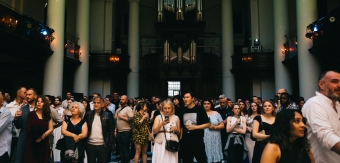B2B marketing has been evolving, and you’ve probably noticed it. In the last few years, there’s been a shift towards the use of entertainment in B2B marketing. This is something that takes many forms: branded entertainment, branded content, ‘edutainment’, and more. While this type of marketing may have first emerged on social media (the trend having emerged in tandem with the rise of vertical video), there’s more to it than just video content. Let’s take a deeper look at this marketing trend, some examples of it, and whether it has staying power.
The lore
The context around this marketing trend is important. Work culture has changed – particularly since the pandemic led to an increase in the number of home-workers. This has led to a blurring of the line between home and work that persists today: rules are more relaxed, dress codes are more casual, and people are allowed to be more human. In short, there’s less of a separation between home life and work life. As a result, people may expect more humanity – and more entertainment – from work-related activities.
The shift towards entertainment in B2B marketing is a symptom of this wider change in work culture, so it makes sense that the vast majority of professionals seem to be in favour of it. There’s a multitude of advice out there for marketers who are looking to harness entertainment as part of their strategy.
In terms of defining ‘branded entertainment’ – a key term here – Faster Capital describes it as ‘any form of entertainment that is specifically created and branded with a company’s name or logo.’ One Medium contributor states that podcasts, videos, and social media content are all effective ways to harness the power of branded entertainment. There are many apparent benefits to investing in this type of content: it could humanise your brand, build thought leadership, persuade, and tell a story. Some even suggest B2B marketers should adopt a social-first approach. To utilise content marketing effectively, the goal should be to represent your offer, or information about your brand, in a fun and engaging way. This can be achieved by: collaborating with influencers and other brands on social media, participating in cultural trends, telling a story that hooks viewers, or writing a catchy song.
B2B marketing GOATs
You will have come across branded entertainment in both your work and personal life – but let’s take a look at some of the best B2B examples:
Upwork – This is how we work now
This short video ad’s opening scene depicts a business meeting where two people debate the benefits of hiring freelancers vs full-time staff, while the rest of the meeting attendees look bored or disinterested. That is, until an undead CEO interrupts the meeting. The zombie, who is named Jack, then leads the group in a musical number about the benefits of freelance working. This is no mere jingle – it’s closer to a musical theatre tune. The closing shot shows the musical zombie returning to his final resting place, under a gravestone that reads: ‘Jack McDichael, Out of Office’.
Slack presents: The Big Meeting
Continuing the musical theme, this minute-long production from Slack balances professional elements (an open-plan office, suit-wearing managers, filing cabinets and ergonomic office chairs) with chaotic musical madness. The song is accompanied by energetic choreography that would definitely violate any health and safety policy – but here’s the message: Slack makes everything easier, reduces stress, and increases productivity.
“Corporate” videos are boring – We’re Umault, a B2B video marketing agency
Umault is a B2B video marketing agency that is taking a different approach to B2B marketing videos. Their core purpose is to create videos that people actually want to watch – and this is perhaps best demonstrated in their own marketing efforts. The entertainment element of their videos is at the forefront, embodying a ‘show don’t tell’ approach. Rather than explaining that Umault’s team has the ability to create high-quality, entertaining ad videos, Umault’s capabilities are demonstrated through content that is comedic, interesting, and genuinely enjoyable for their audience to watch. For example, Super Mario Adobe Premiere, A Quiet Place – Parenting Version, or Don’t get trapped in a corporate video.
All of these videos are reminiscent of B2C TV adverts, or early internet sketch comedy: formats that are designed to engage and entertain. But these companies are going beyond this content, and are also sharing short form videos on their social media platforms.
Slack uses a mix of informative and relatable content, for example this video about the three liquids that you need to help you get through the day. Including popular meme phrases like, ‘X has entered the chat’ make the video more entertaining to an online audience. The video doesn’t even mention the word ‘Slack’, but still manages to include the company logo, and mention app-specific terms like ‘Huddle’ – all whilst driving traffic to Slack’s Instagram profile.
Upwork also uses relatability: this creator uses the GRWM format to talk about Upwork. (GRWM or ‘get ready with me’ is a common format on YouTube, TikTok and Instagram, where creators will create chatty content whilst applying makeup.) Another video shows somebody talking into a wired headphone mic, sharing tips about how to avoid burnout. This video doesn’t talk about Upwork, but instead offers Upwork’s audience content that is genuinely useful, and tailored for relevancy.
SquareSpace shares short, filmic videos showcasing the work of artists and creatives. SquareSpace then creates a website template based off of each artists’ work – promoting their service and showcasing the platform’s capabilities. This approach seems to be a compromise between entertainment and traditional advertising.
The common thread with all these videos is that they each lead back to the company’s core message, central offer, or overarching mission – whether that’s an overt reference, or by directing viewers to learn more.
Levelling up: The gamification of work
Although video is the most obvious form of branded entertainment, there are other elements that help B2B companies to level up the use of entertainment in their marketing. This could include language, messaging, interactive elements on a website, and just about anything that engages someone and brings information to life. As mentioned previously, the use of branded entertainment is all part of the integration of work and play, and the rise of a culture of relaxation.
Here are a few examples of how B2B companies are making the work experience more fun:
- Asana’s celebration creatures
Asana is a work management platform that can help teams organise their work and increase productivity. When a user completes a task in Asana, a friendly creature will appear to celebrate the progress that has been made. This team consists of a unicorn, an otter, a narwhal, a yeti, and a phoenix – and you can even personalise their faces. This feature further incentivises users to complete more tasks – adding an element of delight to the work day, whilst increasing productivity overall. - Slack’s Huddle backgrounds
Slack’s Huddle feature allows users to quickly jump on video calls with colleagues throughout the work day. Each time you start a Huddle, a background is selected from an array of options: each of them abstractly artistic. This feature is simple, but subtly elevates the experience of being on a video call. The colourful and aesthetically-pleasing backgrounds help to create a calm digital work environment, perhaps also sub-consciously boosting creativity. - UX details
Also on Slack, users will find fun UX writing that provides unexpected amusement – adding to the feeling of Slack being a productive and relaxed digital workplace. See, for example, the text that is shown at the top of your own Direct Message channel:
‘This is your space. Draft messages, list your to-dos, or keep links and files handy. You can also talk to yourself here, but please bear in mind you’ll have to supply both sides of the conversation.’
Similarly, the productivity platform ClickUp uses subtle writing to create a more positive user experience. When users clear out their inbox notifications, a message appears, reading: ‘Congratulations! You cleared your important notifications ????’. This text is accompanied by an animation of confetti bursting across the screen. A motivational quote also appears
This isn’t even my final form
After looking at advertising and social media content, let’s now turn our attention to how this trend is impacting the websites of B2B companies – if at all. To do this, we’re going to compare some website homepages from 2019 to their 2024 counterparts. It’s important to note that this is not a comprehensive study: we’re only going to look at homepages, and only at three sites – from three B2B companies who have used entertainment in their marketing. As we will see, there are mixed results: some of these website changes do not support the hypothesis that the use of entertainment in B2B marketing has increased – perhaps suggesting that websites have not been included in this shift.
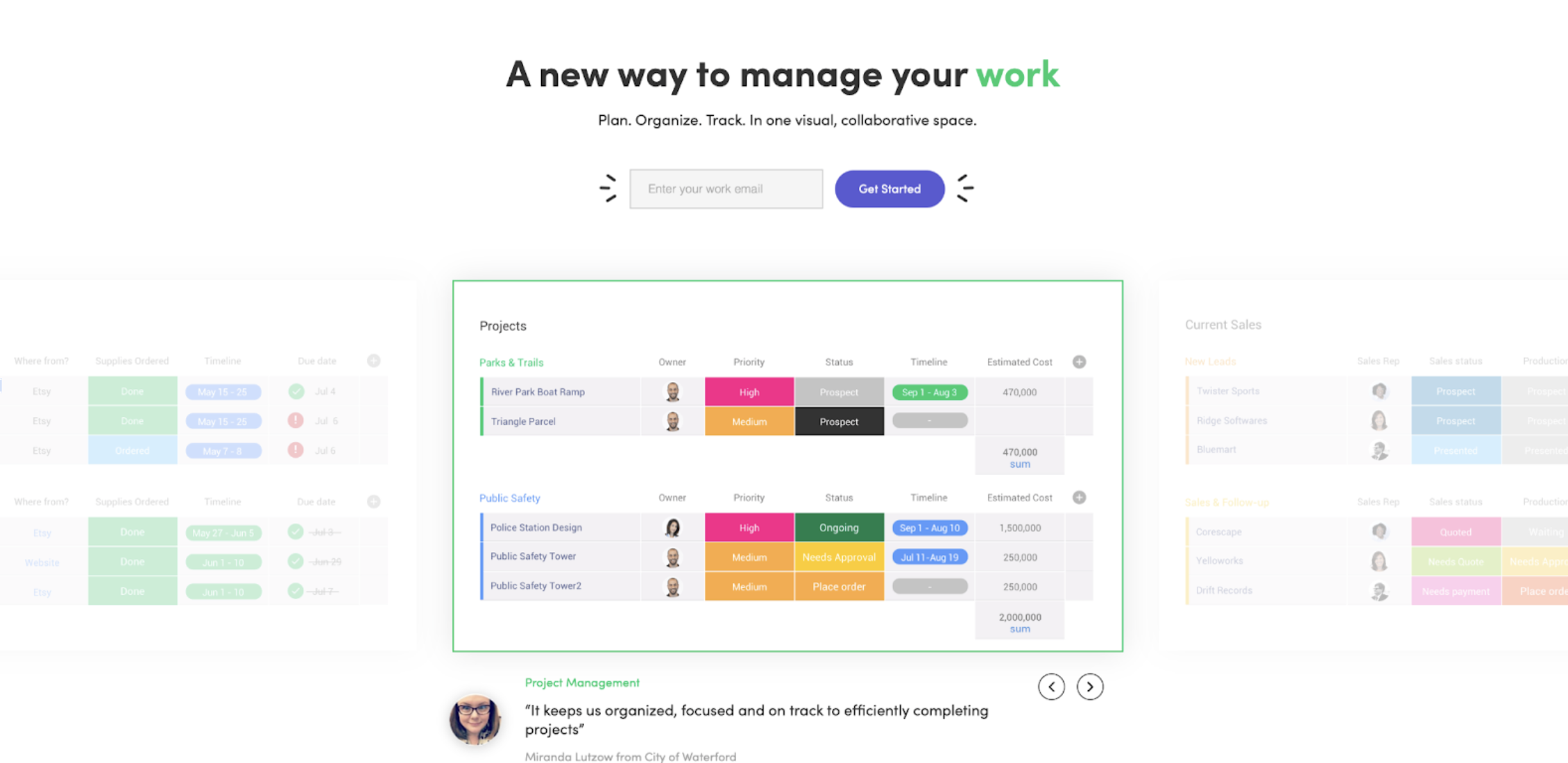
2019
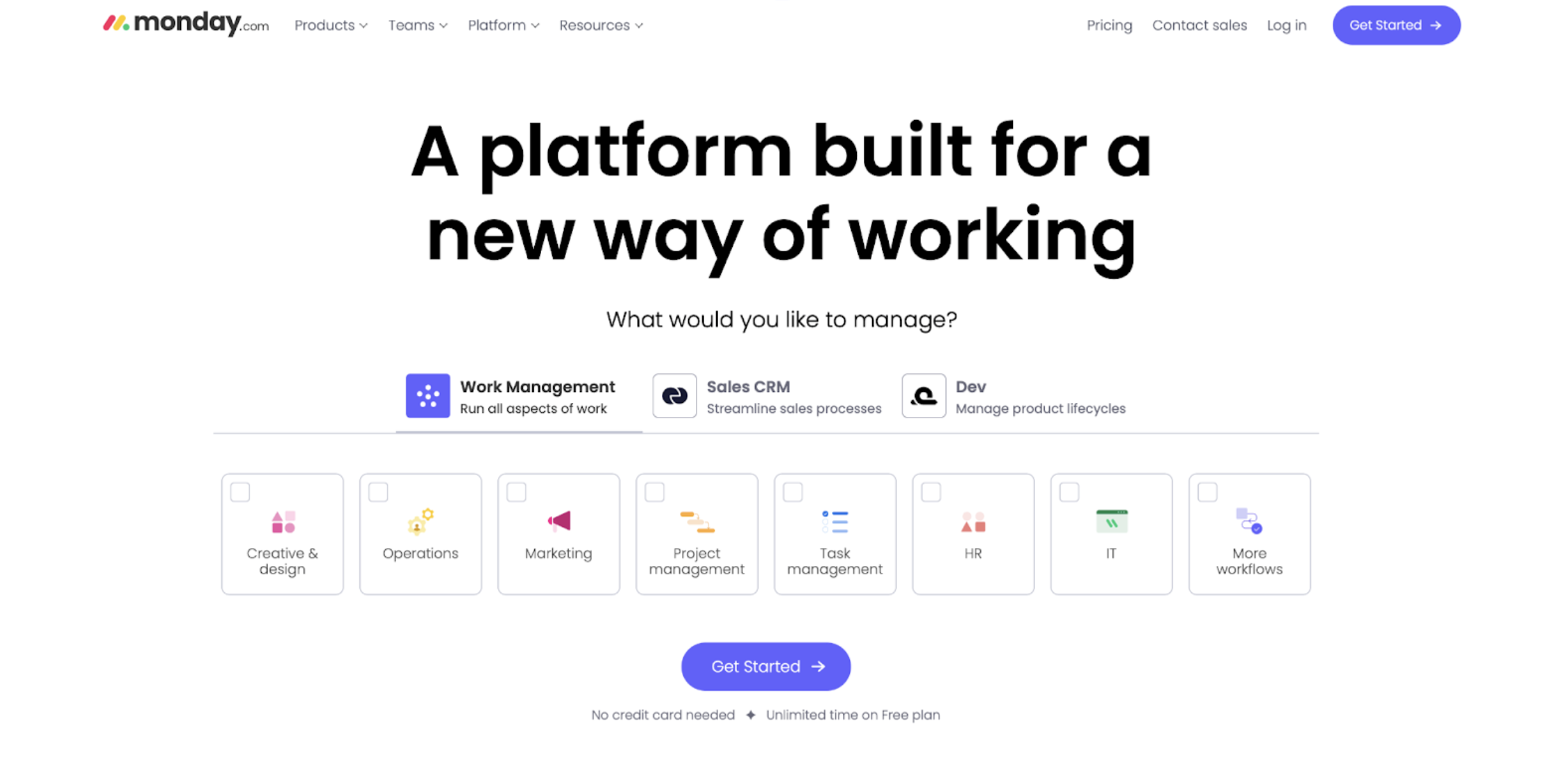
2024
monday.com
monday.com is a platform that offers users an easier way to digitally manage projects and team working. In 2019, the company’s homepage was visually simple, featuring some animated text, a clear CTA, and a selection of testimonials paired with examples of the platform in action. There were plenty of jaunty animations as the user scrolled down the page.
A pop-up offering a free trial appeared to deter users from clicking off the page. This pop-up included a testimonial where a user claimed they wanted to hug the people who created monday.com. If users didn’t want to sign up for the free trial, they could click the text ‘No thanks, I hate hugs :)’.
In 2024, the homepage has changed a lot. The animations are mostly gone, but the page is more busy, with tabs and tick boxes to encourage users to get started. Notably, there are no smiley faces or mentions of hugs.
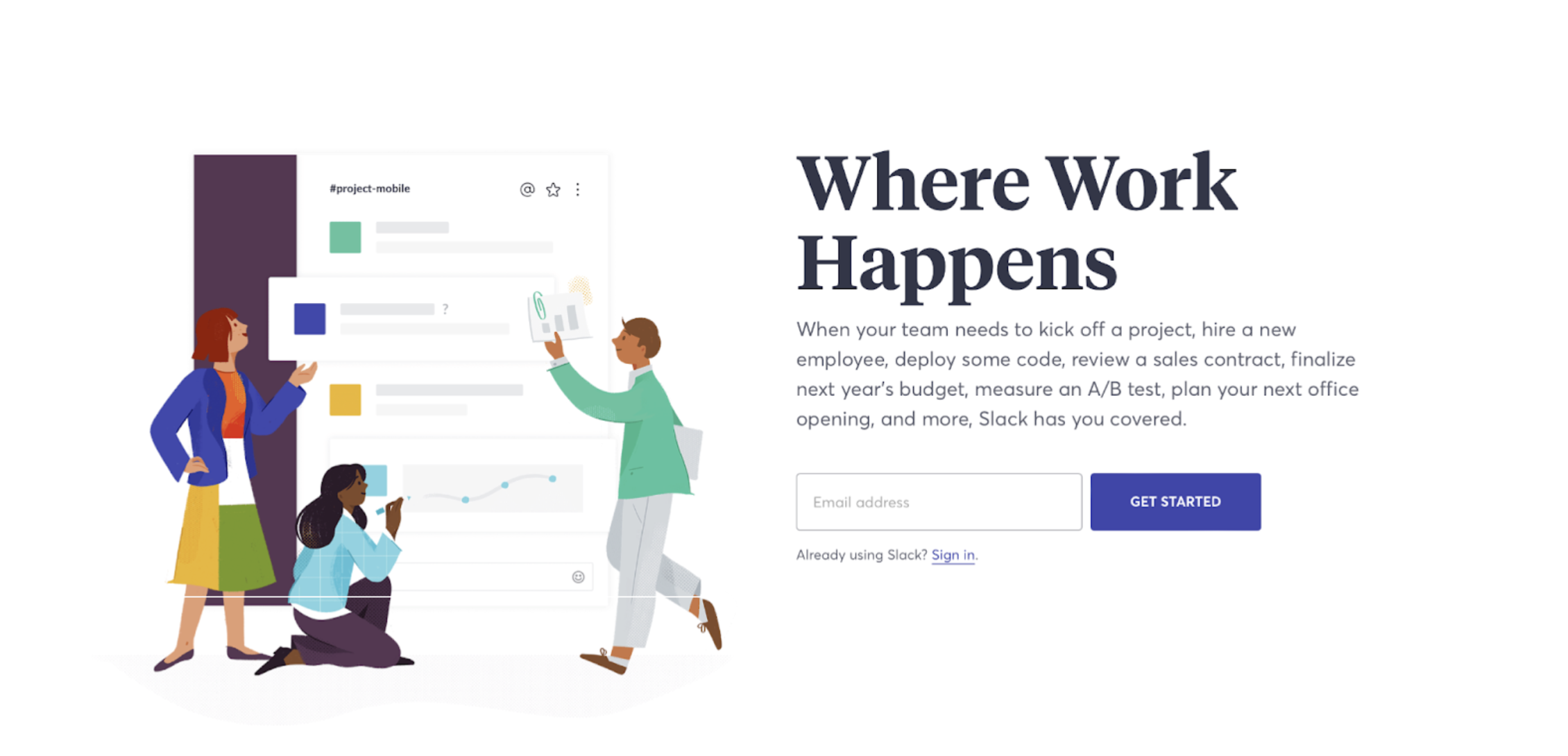
2019
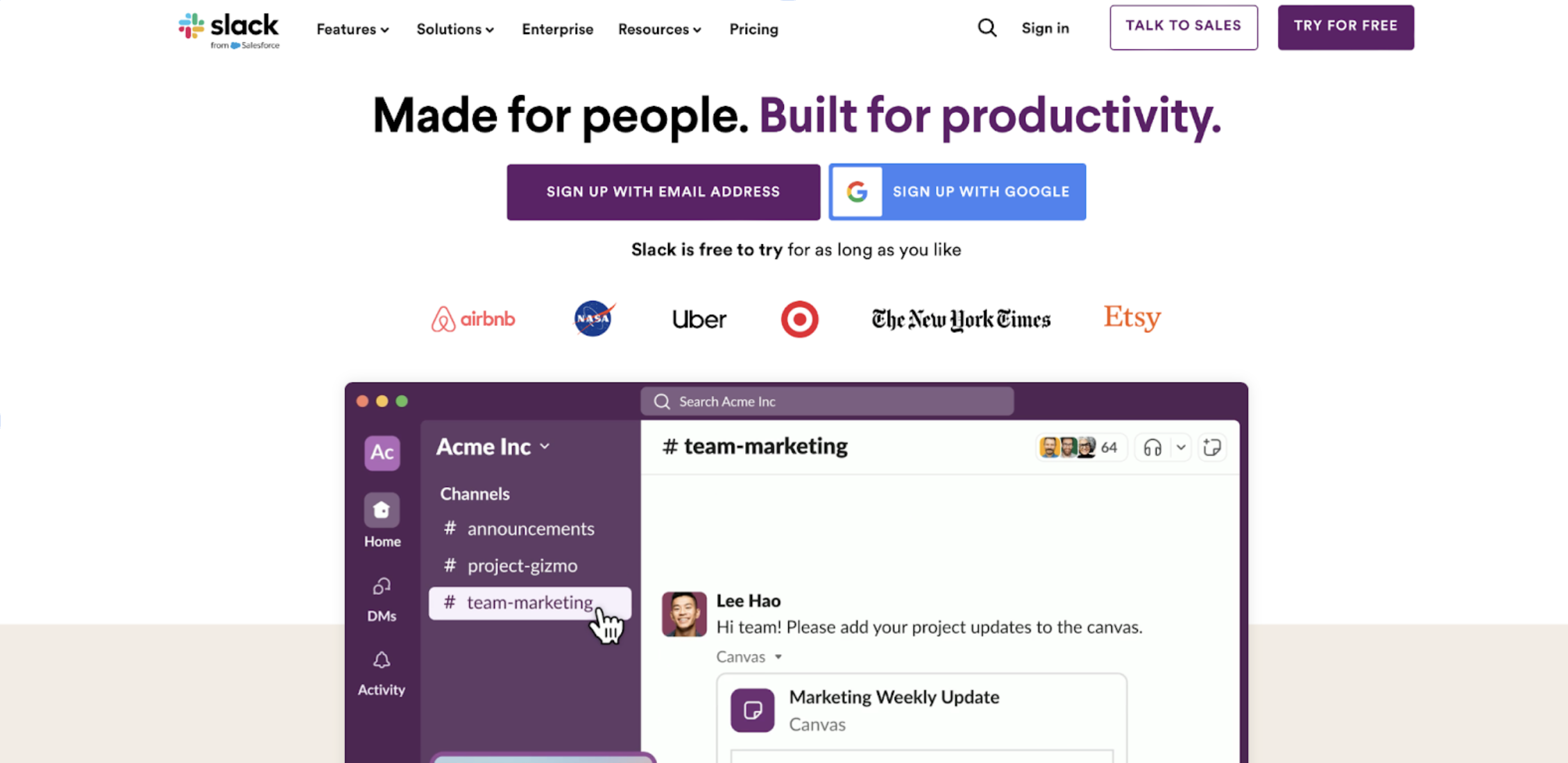
2024
Slack
In 2019, Slack’s website homepage featured a flat, friendly-looking illustration alongside minimal text and a clear CTA. There were no animations or unexpected features.
In 2024, the homepage is busier. The biggest change from the 2019 homepage is the use of animation. As the user scrolls, large animations appear throughout the homepage, demonstrating Slack in action.
The difference between Slack’s 2019 and 2024 homepages is more in-line with what might be expected, given the shift towards the use of entertainment in B2B marketing.
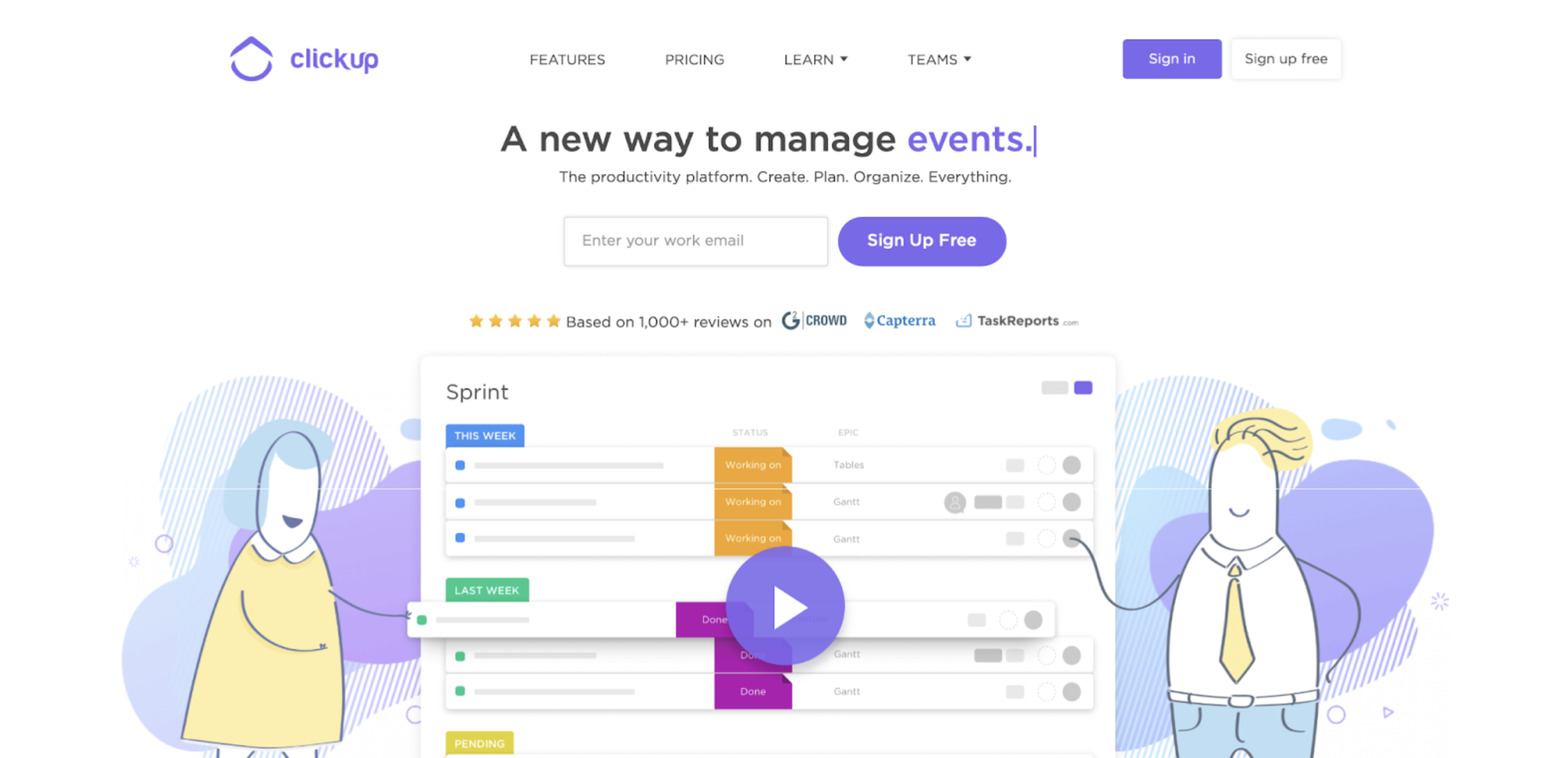
2019
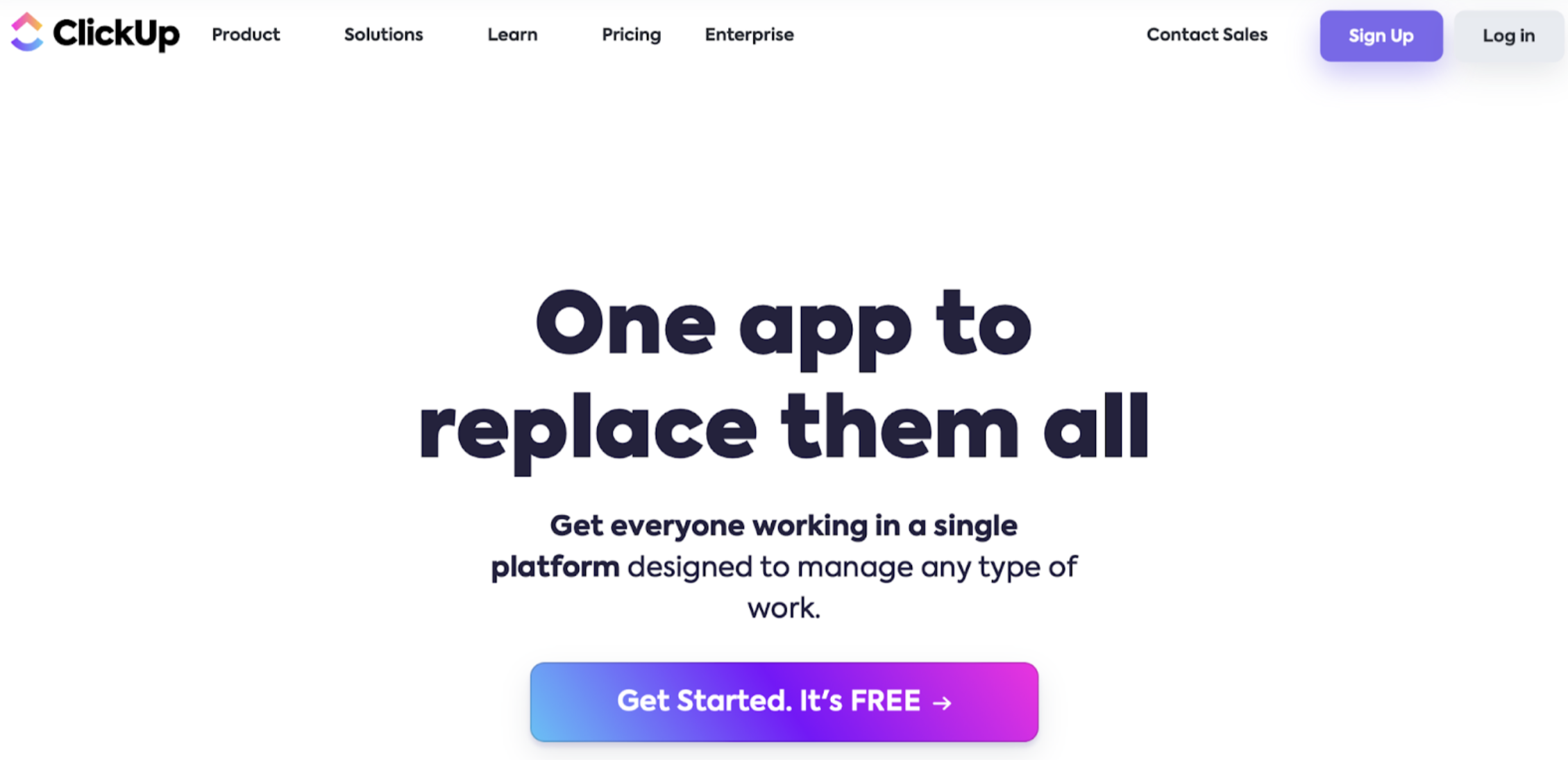
2019
ClickUp
ClickUp’s 2019 homepage featured an animated video as well as text animations and a clear CTA.
In 2024, ClickUp’s homepage is much simpler than it was in 2019. The video is gone, and most of the page is white space: drawing the users focus towards the CTA. Again, this comparison is surprising, given other touch points of ClickUp’s brand (some of which we mentioned earlier).
Although it’s clear that each site is different, the entertainment trend is significantly less evident on these website homepages than it is within other areas of B2B marketing. Although it’s not clear why this is – it could be that there is too much of a focus on creating branded content, and websites are being left behind. Maybe markers have heard the phrase ‘content is king’ so many times that their websites are getting neglected?
Longevity: The final boss
So, we’ve looked at some examples of the use of entertainment in B2B marketing, but does this trend have staying power? It’s worth noting that as long as we continue to have a relaxed work culture, we’ll likely see this shift towards entertainment continue – as people continue to expect entertainment in all areas of life. However, it will likely take some time to determine exactly how this approach compares to others in terms of building an audience, fostering trust, and increasing conversion.
However, what we can observe is that this trend has one thing in common with many other marketing strategies: storytelling. Though the use of entertainment in marketing is sure to evolve in the future, it’s likely that story will be a core element that stays put. The reason for this is that branded entertainment is just one vehicle for story, but marketing has always been rooted in storytelling. This fact would indicate that, just as the way we tell stories continues to evolve, so will the way that brands tell their stories.
You win
After exploring the shift towards entertainment in B2B marketing, it’s clear that this trend can’t be ignored. If you’re a B2B company that is looking to integrate some entertaining elements into your website design or marketing strategy – Novagram can help. We can help you strategise, conceive entertaining marketing messages, build a website that’s designed to engage whilst informing about your brand – and much more. Take a look at our work, and get in touch if you’d like to learn more about what we can do for you.
With our help, you can win new clients and enjoy marketing success.
